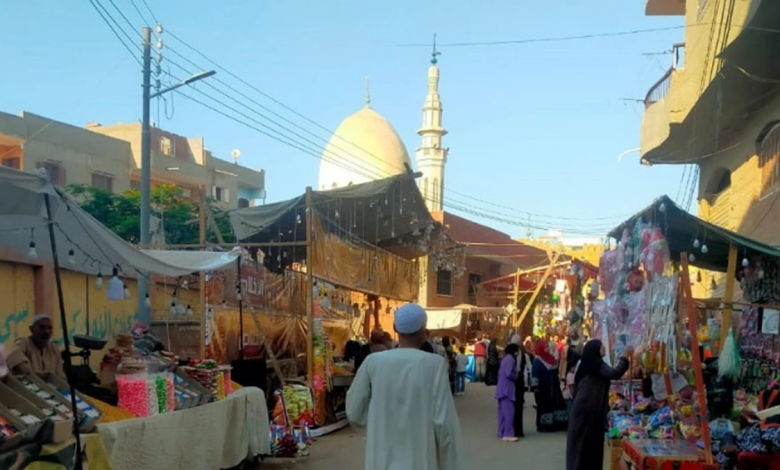
The birth of “Ibn Salam” … The memory of a companion who brings life back to a village in the Dakahlia Governorate
I don’t remember how old I was when I received my first gift from one of my elderly relatives. I think it was a toy car or a small tractor, red in color, just like the ones that were and still are common in rural areas. I don’t remember how much candy and chickpeas I ate as a child, but until recently… What I do remember is that all of this was linked to specific days that recurred every year, the days of the birth of Abdullah ibn Salam.
The shrine is located in Kafr al-Amir (Abdullah ibn Salam) in the city of Tami al-Amid, in the governorate of Dakahlia. Every year in July, delegations from all over the country flock to visit the tomb of Sayyid Abdullah ibn Salam. This was the case this year, from July 11 to the closing night last Thursday, July 17.
The birth of Ibn Salam
Large numbers of lovers, sheikhs, dervishes, Sufis, singers, the poor, and the marginalized come from far and wide to participate in the birth of Ibn Salam.
Ibn Salam was one of the greatest Jewish scholars, if not the greatest, in the city when the Prophet Muhammad (peace be upon him) migrated there. The story of his conversion to Islam is that when the Prophet (peace be upon him) came and saw him, he knew that he was the prophet mentioned in the Jewish scriptures, so he believed in him and followed him. The Prophet changed his name to Abdullah.
We know that he was a sincere believer, a great scholar, and an interpreter of the Holy Quran. He died at the age of at least seventy, during the late caliphate of Uthman ibn Affan, and was buried in Al-Baqi in Medina.
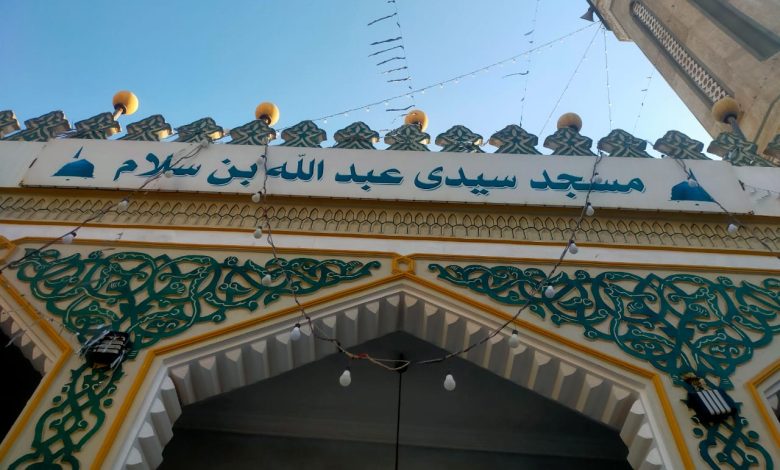
The shrine of Abdullah ibn Salam
Contrary to popular belief among the general public in Kufr al-Amir and its surroundings, they only know that ibn Salam is buried in the aforementioned shrine, and they tell stories about it, such as that he traveled to Egypt in his later years and settled there, or that his body was transferred to the
tomb that was built later, and other such stories that are not supported by evidence or proof. Through my personal knowledge of the Sufi community, I have learned that Sufis and their intellectuals—through discussions with some of them—acknowledge that most of the tombs built in the style of the tomb of Ibn Salam are in fact “shrines” and not graves.
In a conversation I had during my visit to the moulid with Sheikh Mustafa Zayed, a researcher specializing in Sufism, he told me that the shrine was originally for a righteous woman named Al-Sitt Halwa. People used to visit her regularly until Abdullah ibn Salam was seen there, and the people decided to build a shrine for him on that spot.
Visitors to the Mawlid of Ibn Salam
Over time, Al-Sitt Halwa was completely forgotten, although the dome of her shrine still stands next to the shrine of Ibn Salam. The memory of Ibn Salam remained in her place, and a moulid is held for him every year. We do not know the exact date of the shrine’s construction, nor when the moulid began. However, it is so old that current visitors know about it from their grandparents and great-grandparents.
The celebration begins on July 11, as mentioned above, but a few days before that, preparations begin to set the mood for the celebration. Candy and chickpea sellers come from all over, spreading out on the ground or setting up stalls to sell their wares.
There are also amusement park operators and swing riders, offering many different kinds of games in various shapes and colors. Some sell prayer beads, books of prayers and invocations, prayer rugs, and small musical instruments such as tambourines and rebabas.
Followers of Sufi orders—such as the Rifai, Shadhili, and Khuluti—arrive and begin setting up tents for the “service.” These are often funded from their own pockets to welcome delegations from the village and surrounding areas, as well as from the coast and other tribes. They prepare the necessities for the “hadra,” foremost among which is chanting. The moulid square, which surrounds the mosque and the shrine on all sides, is prepared to accommodate everyone: visitors, merchants, and service providers.
The economic impact of the moulids
The Mawlid of Ibn Salam highlights its importance and the role it plays in the lives of the villagers. The economic activity generated by the celebration of the Mawlid cannot be overlooked. Traffic and transportation are congested from the Nile Delta and the coast with travelers heading to Mansoura by train and other means. From there, they head to the Sandub station, and from there to Tami al-Amid and Kafr al-Amir to visit the moulid in order to receive blessings and goodness, which are believed to be granted by visiting this saint or venerable companion.
The commercial activity of the “Mawlid” market is undeniable, with the sale of sweets and locally made toys. There is also the money spent by those providing services, such as tea, sugar, coffee, gas, and water. And the cost of feeding visitors with rice, bread, meat, and the like.
This is where the best qualities of the Egyptian character are evident. The Egyptian street is adorned with qualities such as generosity, hospitality, good neighborliness, feeding the poor, and kindness to the destitute, beggars, and dervishes.

The followers of the Refai
In the tent of the followers of the Rifai order, we were welcomed with great warmth and unparalleled generosity. We sat down to rest and drink tea. When it was time for the meal, we were invited to join the rest of the visitors. The meal consisted of rice, vegetables, and meat. As I heard from one of the diners: “The food here has a special taste; it is blessed and good.”
I recently learned from one of the people in charge of the service that when they start cooking, the sheikh of the service comes and recites the Fatiha and the Mu’awwidhat over the food with the intention of blessing and healing.
The tent, or “service,” is a place for hospitality and welcoming visitors to Ibn Salam. It is also a shelter for visitors, including the poor, dervishes, and Sufis. They eat, drink, and sleep without being bothered by anyone, in a wonderful display of solidarity and social cohesion.
Guests of Abdullah Ibn Salam
This phenomenon has a religious and mystical dimension for those who run the “services,” especially the villagers and the Sufis in general. They believe that the visitors are actually guests of Abdullah bin Salam himself. Honoring them is honoring him, and doing good to them is doing good to him.
After we finished eating, we went to the “hadra,” where Sheikh Essam Darwish, who came from Asyut, was singing. He stood in the middle of his band, surrounded by his followers and dervishes, who were present and chanting in harmony and unison.
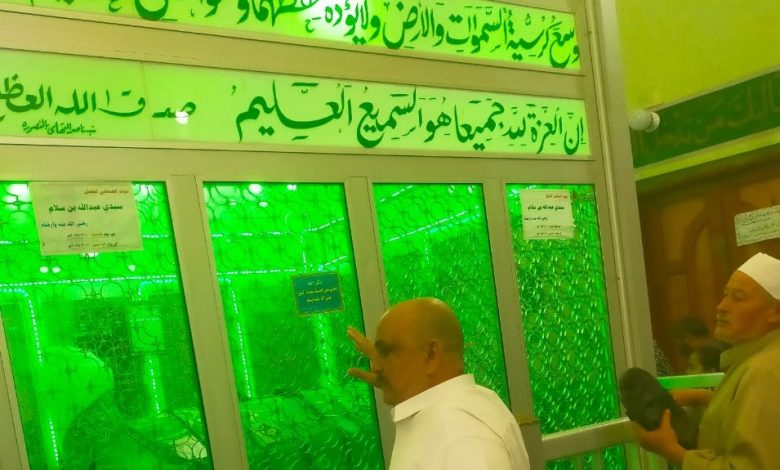
Al-Hadra and chanting
The cultural aspect that supports and enriches the village is evident in Al-Hadra and chanting. These two traditions preserve much of the folk heritage and Sufi culture rooted in Egyptian street life.
This is most evident in the chanters who come from different places, near and far, to sing the praises of the Prophet, peace be upon him, his family, and his companions. They celebrate the various moulids throughout the country. Issam Darwish, who came from Upper Egypt, joins his counterpart, the chanter Fouad Abu Ali, who came from Tanta in the Gharbia governorate. with his counterpart, singer Fouad Abu Ali, who comes from Tanta in the Gharbia governorate. They are joined by admirers from the village and visitors, regardless of their culture, background, or taste.
Essam Darwish explains: “The audience anywhere hears you with their soul, savors your words, and understands them, whether they are from the north or the south.”
From what we have mentioned, we discover that the Mawlid of Ibn Salam represents the beating heart of this village. It breathes life into it, fills it with spirit, and benefits its people economically, socially, and culturally. It also strengthens the Sufi religious sentiment in the hearts of visitors to Ibn Salam.

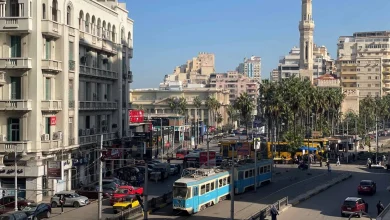
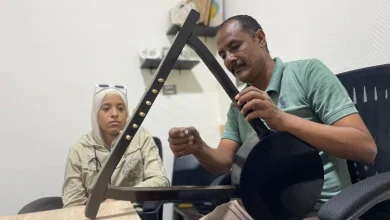

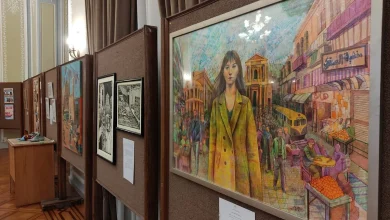
Hi, this is a comment.
To get started with moderating, editing, and deleting comments, please visit the Comments screen in the dashboard.